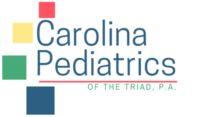Parent Resources
Treatment of Sports Injuries (Care of the Young Athlete)
View spanish version, share, or print this article.
There is often more than one way to effectively
treat an injury. Treatment programs are always adjusted to meet the individual
needs of the athlete and the unique requirements of the athlete’s sport
or activity.
The following is information from the American
Academy of Pediatrics summarizing general rehabilitation principles and the
importance of each phase of the treatment program. While each injury has
specific requirements for rehabilitation, the general principles of
rehabilitation apply to all treatment programs.
| Rehabilitation Principle | Why It’s Important |
|---|---|
| 1. Confirm the diagnosis. | The success of any rehabilitation program depends on an accurate diagnosis. If a swollen joint is being treated as a sprain when it is really a fracture, treatment may not only be ineffective but harmful. With a valid diagnosis and treatment, symptoms should improve in a natural and predictable way. |
| 2. Treatment must address effects and causes of injury. | The effects of an injury usually include pain; swelling; and loss of joint motion, muscle flexibility and strength, speed, agility, and/or coordination. A comprehensive rehabilitation program must help reduce pain, restore movement and strength, and correct functional deficits. It is also important to identify and address the causes of injury. Causes of injury can include poor training, incorrect technique, equipment failures, and individual factors related to flexibility, strength, joint stability, and alignment. |
| 3. Rehabilitation happens in 4 phases. |
There are 4 phases to all 1. Rest, protect injured area, 2. Restore joint motion and 3. Restore muscle strength, 4. Restore function When treatment does not follow a |
| 4. Rehabilitation should not be painful. | The “no pain, no gain” approach to injury treatment is a certain way to achieve “no gain.” It is normal to have some lingering discomfort from the injury. However, efforts to bear weight, move a stiff joint, or exercise an injured muscle should not cause more pain. Pain or swelling that increases usually means the rehabilitation is moving too rapidly or the exercise is being done improperly. Any increase in symptoms during rehabilitation means you need to check with your doctor. The rehabilitation prescription may need to be changed or further testing may be needed to confirm that the diagnosis and treatment plan are correct. |
| 5. Use available resources. | Relying solely on pictures or descriptions of rehabilitation exercises can be misleading. To be sure that the prescribed rehabilitation exercises are being done correctly, it may be helpful to have the exercises reviewed by a certified athletic trainer or physical therapist at your school or in your community. A gym, health club, or fitness center often has exercise equipment that can be used for injury rehabilitation as well as general fitness or cross-training. Personal trainers and fitness instructors can also help with general fitness and maintenance exercises, but they are not qualified to diagnose injuries or prescribe rehabilitation. |
| 6. Return to play depends on restoring normal function. | Returning to play following an injury requires not only time for the injury to heal but also restoring the body’s ability to meet the physical requirements of the sport. All sports require a certain amount of joint mobility, muscle flexibility, and muscle strength. There may also be a need for speed, power, endurance, agility, balance, or sport-specific skills. Even when athletes are pain-free after an injury, they should not return to their sport until they are able to meet the requirements to practice and compete in the sport. |
| 7. Maintenance therapy should continue after return to play. |
Once an injury has been rehabilitated and the athlete has returned to play, there are usually a few exercises or ongoing precautions that are helpful in maintaining the recovery and preventing reinjury. This may include flexibility or strengthening exercises, use of protective equipment (such as tape, braces, or orthotics), or continuing with modifications of training or technique. Once athletes have been cleared to return to play, they should know which precautions and exercises should be continued long term as well as when, or if, they need to check back for follow-up care. |
| 8. When in doubt, ask. | Every injury is different and every athlete is unique. If treatment is not progressing smoothly or something unexpected develops, let your doctor know. If you are working with a certified athletic trainer or physical therapist, they may also be able to help you with questions about rehabilitation exercises, protective equipment, functional testing, maintenance therapy, or the need for follow-up care. |
Powered by RemedyConnect
disclaimer
Denver Data Feed


